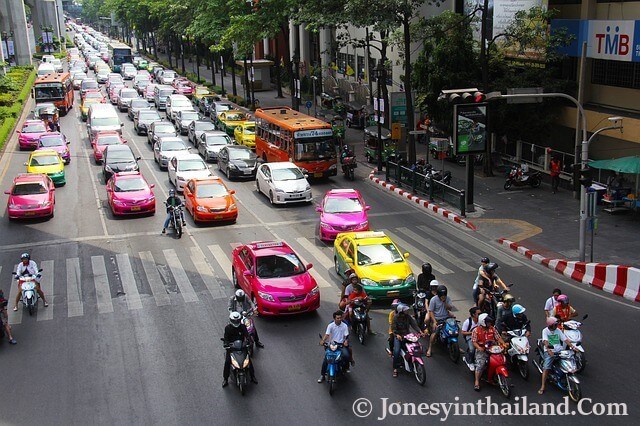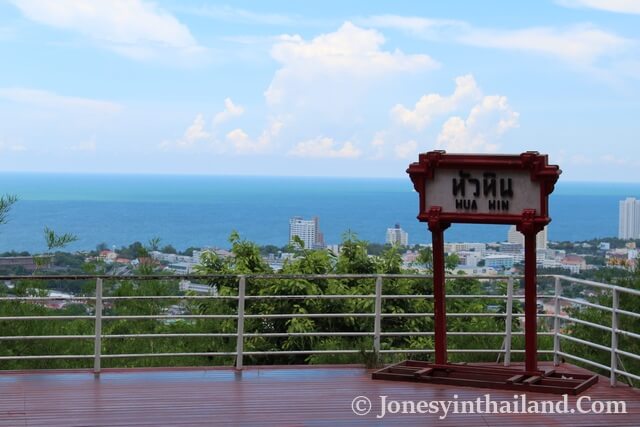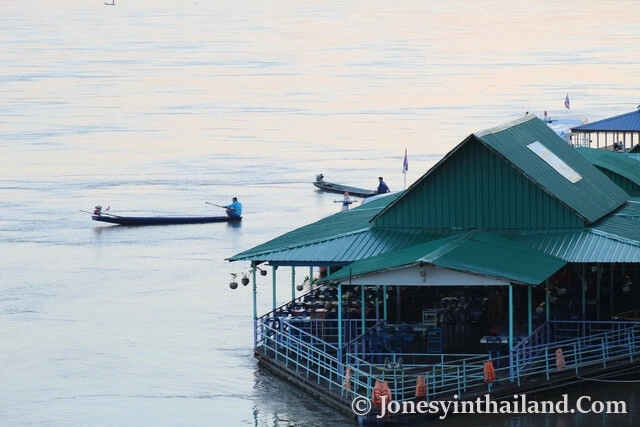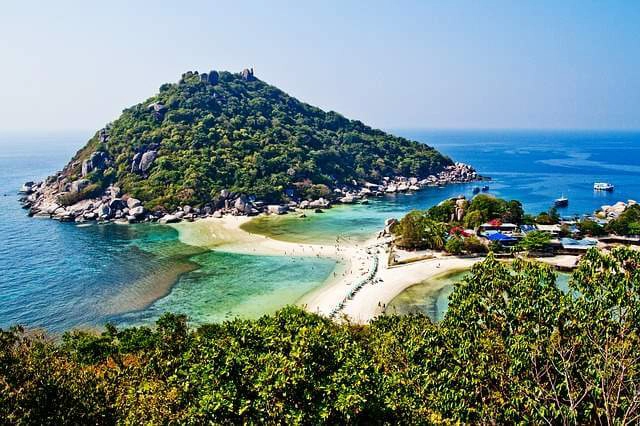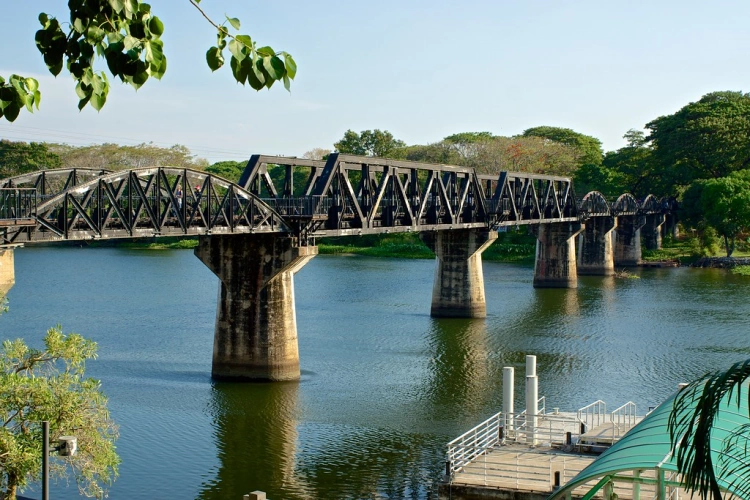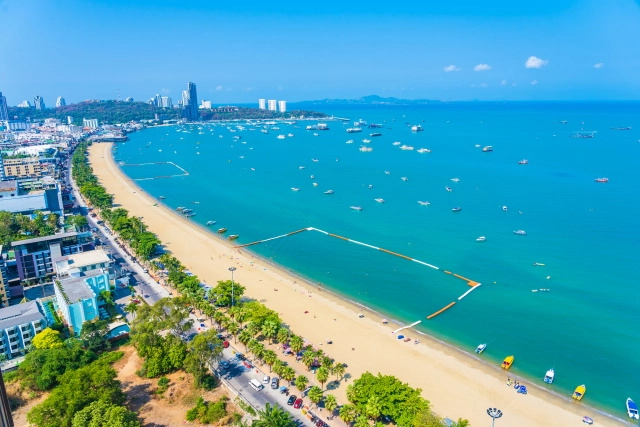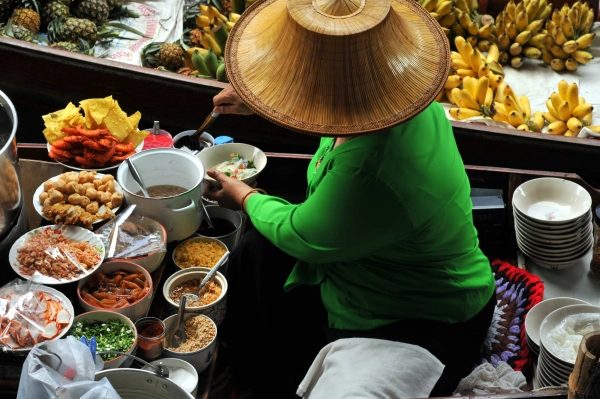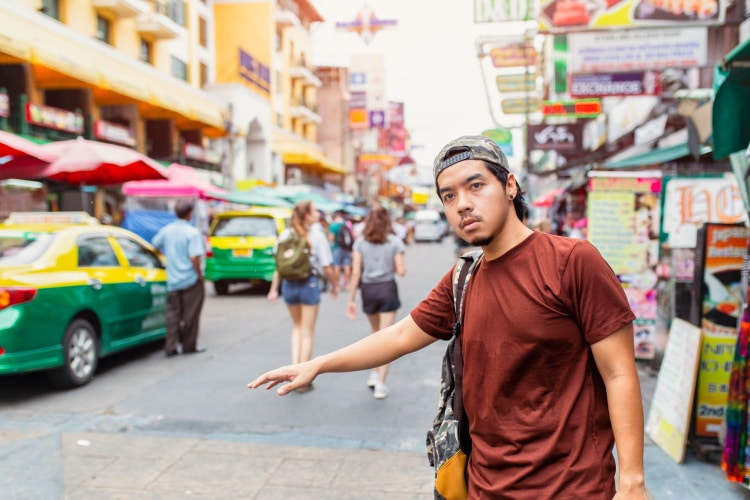Bangkok Transport Guide – Getting Around Easily & Conveniently
What, another Bangkok Transport Guide? You could be forgiven for briefly edging towards that route of thinking.
But—and it’s a BIG but, as anyone remotely experienced with Bangkok knows–the speed at which all manner of change sweeps through the Thai capital can sometimes be surprising. In simple terms, things change in Bangkok—a lot, often, and consistently.
Whichever current development drive is steaming ahead will doubtless be leaving previously-familiar areas of the city looking unrecognizable within a year or two. The self-perpetuating beast of commercial property development and its other capitalistic avenues continue to carve through even former residential districts across the Bangkok landscape. It is what it is.
Of course, this means that for any existing or developing transportation routes attempts will be made to extend or expand them according to demand—which at this point still seems difficult for both the MRT Subway and the BTS Skytrain services to achieve.
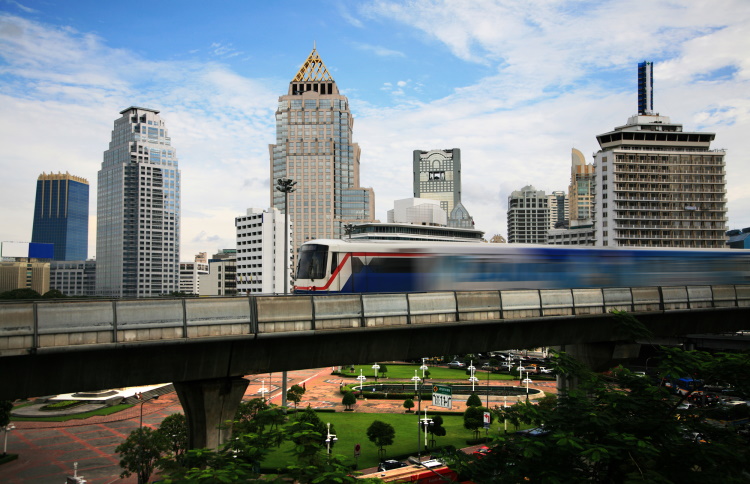
How to Stay Abreast of and Adapt to Changes
One of the major ways in which today’s technology really serves us travel types has got to be via the ever-increasing real-time, often unbiased information and reporting by way of YouTube and other platforms. The net is now awash with constant streams and updates from journo types, bloggers, or otherwise–people already in the places they report on—about what is happening there.
But sometimes there is so much information to take in it can all sound a bit much.
The other way that modern technological systems and gadgetry influence Bangkok life is through the various applications that the various systems operate which (are supposed to) take the weight, time, and queuing out of paying for and selecting tickets etc.
There are certainly more and more useful means, innovations, and angles provided by many of these apps—which are multi-purpose much of the time—i.e. you can top-up your phone credit and pay for a meal with them as well etc. They can help you to smoothly but gently navigate your way in and around the city these days if you lean towards digital native status.
The various situations and environments presented by Bangkok may alone be that much more enjoyable knowing you can get from A to B well enough, and with a variety of options now mostly at your fingertips via certain applications if you are OK with all that stuff.
This way of moving around the city and paying for things is all very fingertip-touch-now, and it certainly helps do away with a few previously common unsavory travel issues–like getting taken the ‘long’ route home or being ‘wrong-changed’ by a greasy-handed taxi driver.
Many apps and websites in Thailand are notorious for not operating that smoothly—but some of them really do have their uses for sure like the smart e-payment Rabbit Card for the BTS Skytrain that you can top-up online and in various other locations, thus skipping any queues. You can also use the card for various other payments, and cashless payments are big in Thailand right now—especially in light of the last couple of years.

Everyone needs to do some prior research these days before even planning a trip. This should be based on what is currently available and what is realistic in terms of user-friendliness. Not everyone can or wants to use apps or have their face in a mobile all day when they are on holiday. Doubtless they will encounter the usual queueing, communication problems etc., that apparently makes it all the more fun.
Getting around Bangkok need not be that much of a headache with a few details and tips here and there—if you are willing to embrace at least some technological applications. Let’s first consider a few things to look out for before kicking off with some of the transportation options in Bangkok and their various nuances.
Potential Challenges to Getting Around in Bangkok
Some things do remain the same in the Thai capital that many would rather not–like the city’s inward and outward routes containing what qualifies as some of the worst traffic congestion in Asia. Things on Bangkok roads these days are no better than at any time before—in fact they are statistically much worse.
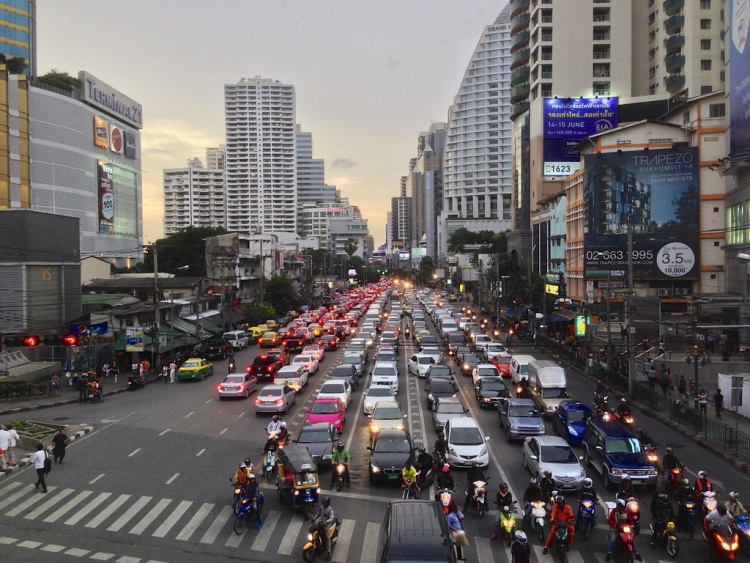
This means any route taken by road requires a tad of planning according to time and distance, rather than simply hailing a cab—much worse a tuk tuk–with a driver who most probably has no real clue of where or what the destination is and so just drives hoping you’ll direct him at some point. This particular breed of driver is still around in Bangkok but is slowly being edged out by the more service-driven operators for transport app platforms like Grab Taxi, Bolt and Gojek—Uber was ushered out of Thailand long back.
Language barriers and using a different currency are still fairly big issues for many visitors to Thailand too, but things are definitely looking up.
The Good News
- Many of the transportation-related apps—particularly Grab—have made real inroads into upping the quality of road transport using software that tracks you and your journey in real-time for safety, giving you the fare price in full before you even get picked up (which cannot change), with the option of cashless payment. This couldn’t be easier as far as most users are concerned and the drivers know that they can be rated by you. This improves the quality of service, as does the companies having policies about the drivers and any critical or poor feedback, particularly if related to safety issues like driving too fast.
- The Grab and Bolt Applications are good news for anyone bored with language barriers or dodgy Bangkok Taxi drivers. It is nothing less than a miraculous addition to transport options in Bangkok in that you get picked up from whichever location you are at and taken to a keyed-in map location and with a fixed price.
- You can order a bike, a car, a taxi, or a random pick–depending on who is nearest driver-wise between a car and a taxi. The price is very similar–just slightly in favor of the more comfortable by far journey by car.
Making Payments
- ATMs can be found everywhere near shopping malls and 7-Elevens etc., but many people are opting for cashless options and scanning, using apps etc. for payments in Bangkok. Cash is still fine but you’ll need to do a spot comparison on fees etc. for baht conversions from your local currency and the fees for ATM withdrawals abroad unless you’ve brought enough with you or you are able to go cashless.
- You can track any baht conversions from your local currency whether dealing with cashless payments or otherwise. The trend of recent years has seen visitors getting much less baht for their money than they might expect or previously had. This has seen more people now question the viability in terms of expenses and services when it comes to using ‘downtown’ amenities like the BTS skytrain system–especially on a daily basis–maybe even with kids. It’s certainly wise to make a few comparisons if you are staying in the city for a week or two.
- More city-dwellers are relying ever more heavily on options and apps like Grab, Gojek, LINE, and Food Panda for transport and even food delivery. Definitely anyone in the city for a while might consider a spot of comparing various options, prices, and other pros & cons like time and distance and service quality when it comes to transport.
– Related: Thailand ATM’s Guide & Tips – Learn About Charges, Best ATM and More
It’s fair to say that the BTS has had the monopoly on the city’s transport for at least a decade– although many Thais have now become increasingly bored with continuous poor service (including crammed trains due to shortage of carriages and break-downs) as well as price hikes.
Comparing expenses and services for things like travel and eating these days has become something of a necessity as Bangkok has long since lost any tag that it might previously have held in terms of low costs or inexpensive living. In SE Asia it was voted the second most expensive city to live in or visit over recent years, and that’s not looking to change anytime soon.
Planning a Trip
Whatever kind of visit you are planning on making to Bangkok, whether with the intention of booking a regular hotel (which may or may not still be in operation if you stayed there before) or considering other options like an airbnb vacation rental, which these days are becoming more plentiful and popular as they offer a different kind of flexibility for often very reasonable rental fees.
It’s good to have some idea about the different areas of Bangkok city in general as well with regard to where you want to stay and this will depend on whether you are traveling alone, with a partner, family, kids, etc. as Bangkok is quite a diverse place.
The majority of visitors tend to opt for central regions like those along the main Sukhumvit BTS line somewhere between Chit Lom, Asok, and Thonglor. This is the main tourist district along with areas of Silom and Siam, packed with shopping malls, night markets, restaurants to suit everyone, and of course, plenty of bars—also to suit everyone.
The other main popular area for accommodation is the Old Town where many tourist attractions like temples and historic royal buildings and museums exist, as does the famous Chinatown not too far away—a must-try for street food. There still aren’t many train or public transport options stretching out this way so a car or taxi (or boat) is usually necessary in this region of the city near the famous Chao Phraya River, which offers many of those classic Bangkok skyline scenarios.
It’s true that many love the real-time-chaos vibe of the Thai capital, while others simply can’t handle the combination of constant din, confusion, and humidity all together—so it pays to have some idea of what suits you and where to find it. The big city is not everyone’s cup of tea for more than a day or two, that’s for sure—nor is Bangkok that much of a family-friendly location in many ways (especially where prams or pushchairs are involved).
But there are always ways and means. It’s always best to have a rough plan based around your length of stay, your budget for travel and accommodation, and what kind of places or activities you want to check out. If anyone has told you Bangkok is an OK place for backpacking around for instance, we would recommend at the very least that you ‘unfriend’ them.
Transportation Options in Bangkok
Transportation in Bangkok has seen a few positive developments over recent years by way of add-on transportation links for existing subway and skytrain routes.
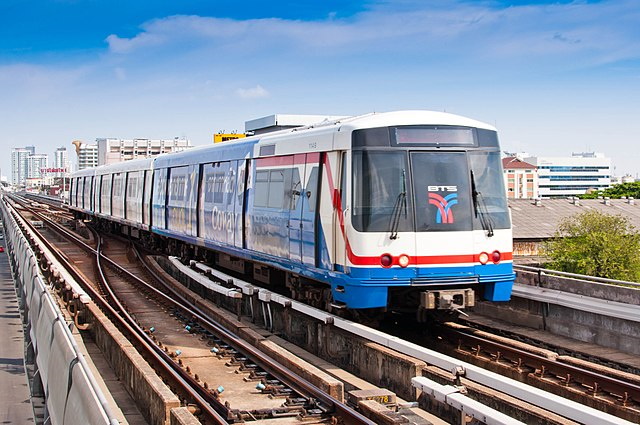
These additional lines and stations for both the BTS Skytrain and the MRT Subway have made broader fields of travel across the city possible. Both systems—which incidentally are not operated by the same company–are also under constant expansion with the ongoing development intended to allow easier access to important stations. This comes as welcome news for some people farther out from the central areas having to commute by car or even bus.
So your subway and skytrain system maps from your last visit to Thailand a few years back could well only now be half of the ongoing picture. You can see the current stations (at the time of writing) here on the route maps for the BTS and the MRT systems.
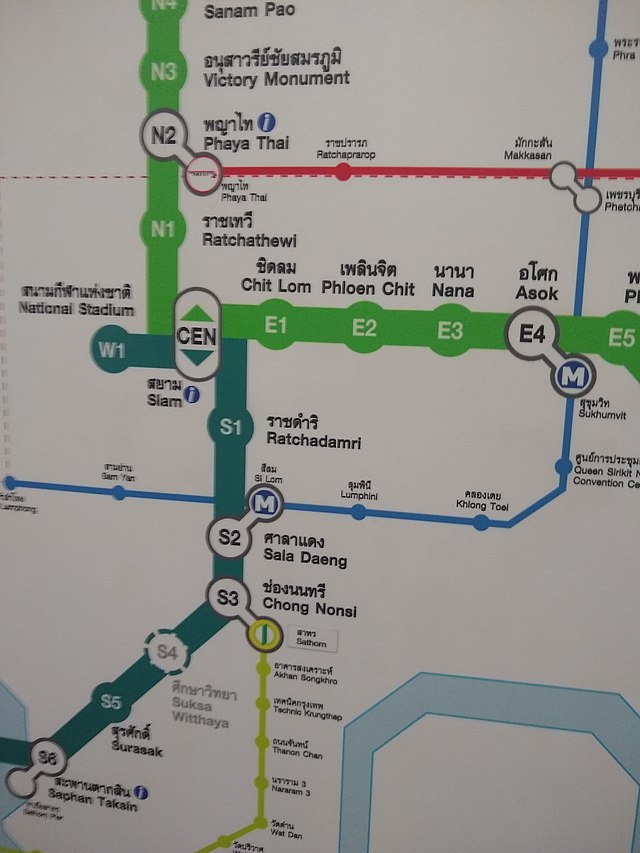
Increased services in Bangkok generally equals increased use–followed by the obligatory cash-in price hikes which make you start to consider other means of transport if you need to get somewhere on a daily basis, as well as your choice of dining and supermarket options. This is especially true for anyone who immediately takes to wearing open-toed flip-flops once they hit Thailand which they’ll soon find don’t suit the crowds and trampling on the trains.
The main BTS stations tend to be the ones in busy city-center regions which also function as interchange stations with the subway like Asok, Siam, and Mor Chit (Chatuchak). Victory Monument is also notable as it has lots of shopping areas for young people and also functions as a bus hub.
Buses in Bangkok
If you really are looking to travel on a budget though and are not averse to collecting experience, you could always consider the bus.
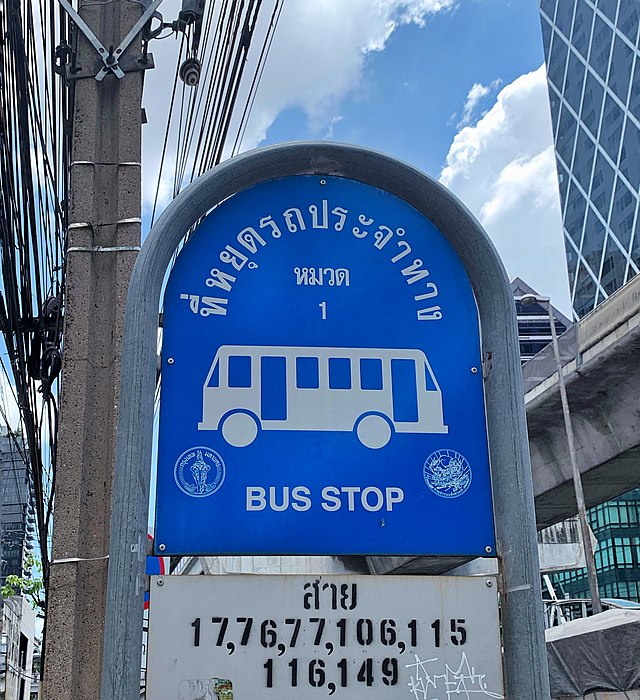
Buses in Bangkok have always been the most affordable way of getting around the city aside from the boats. The fact that they have managed to stay low-priced means they also remain the go-to option for legions of Bangkok workers who don’t consider the over-priced BTS sky train and subway as a viable daily option.
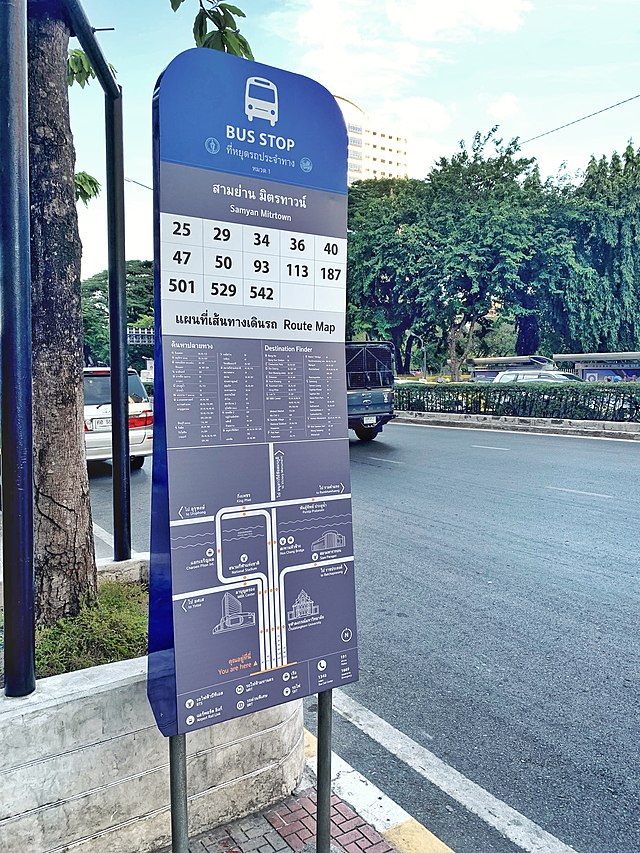
Buses can also be a great way to see Bangkok, although unfortunately there are a couple of things that don’t always work in their favour. The most obvious one is the notorious Bangkok traffic congestion. The buses are not absolved from this as the city has no bus lanes to speak of. And if it did, they would most likely be blocked with traffic!
The other thing that really goes against the buses is the lack of upgrades they see. On top of that you’ve got the occasional crazed-and-confused-looking driver who’s done too many back-to-back shifts helped by Red Bull. These guys will go for any lane they choose, often rather abruptly and without any apparent regard for the comfort of the passengers.
The routes they follow can also sometimes change on a whim, even seeming susceptible to a change of direction without so much as anything resembling prior warning. Oh what fun!
It is changing slowly though on the bus front—the recent numbers and routes displayed at the bus stops—some of them electronic–have come as a welcome addition to the journey for many bus users.
There have even been growing numbers of newer and more modern buses on the Bangkok roads, but this seems to be a slow process and many of the older models billowing black smoke are still blasting their way through the city. Nevertheless, we would still recommend you get the Grab app.
Bangkok buses are a very ‘Thai’ thing—one of the reasons you may see fleeting surprises on the faces of local passengers when they catch sight of a westerner or otherwise on a Bangkok bus.
If you are OK with that you’ll find the trips vary according to the quality of the bus, the distance, and the price of the fares. The main hub for the buses operating routes in and around Bangkok is Victory Monument, although there are stations for North/Northeastern-bound buses and southern-bound buses at Mor Chit and Ekkamai respectively.
You can find out more about routes and fares in and around the city from the BMTA site.
Boats in Bangkok
Not always so well-known to many modern-day Bangkok visitors is the fact that water transport has always played a key role in the city—and still does. The canal network, although vastly reduced from days gone by, is still fully in effect. And of course the city is situated right next to the Chao Phraya River, which utilizes different kinds of vessels depending on purpose.
Maybe you like a bit of authenticity. Maybe you don’t really fancy the idea of packing into a crowded, over-priced and uncomfortable BTS sky train, or sitting in hours of traffic on congested roads. If this is the case, then you’ll love exploring the waterways of the Thai capital by jumping on a river or canal boat-which are both very different experiences.
If you are visiting Bangkok and decide to stay somewhere in the region of the riverside area near the Old Town side of the city you’ll find boats are a great way to get around.
There are a couple of different types of boats along the river, with the Express River Boats being the main one.
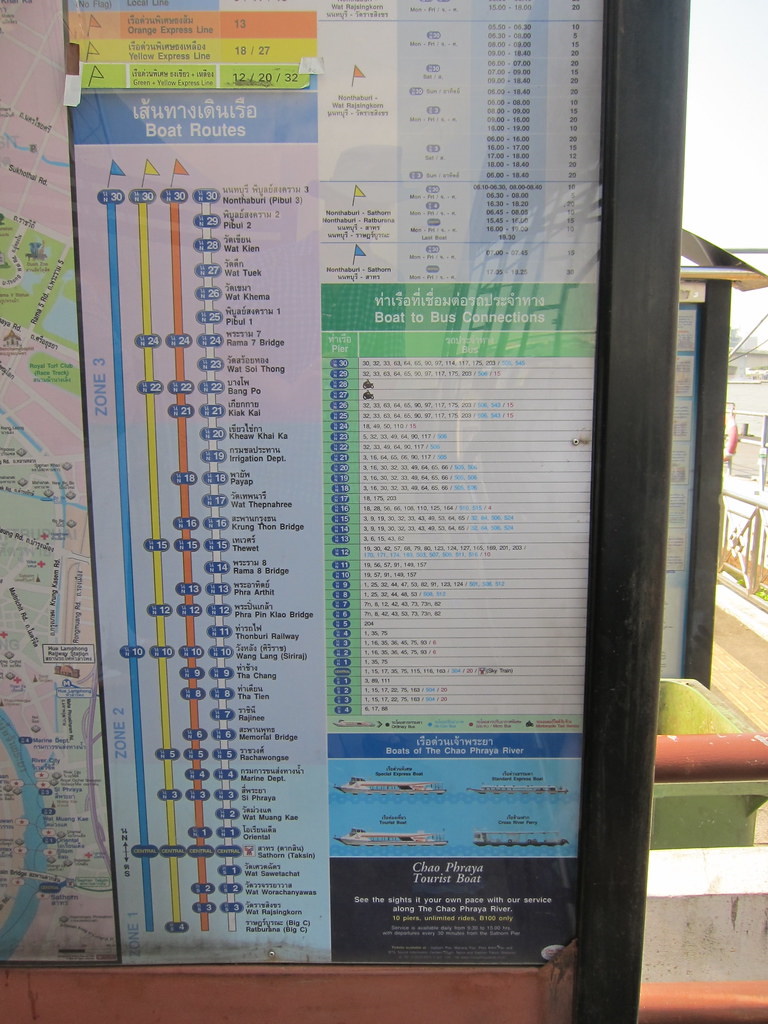
Express River Boats
These boats run up and down the Chao Phraya River, and also provide a connection to the local areas of the Thonburi side of the city. They are a useful means for many people to get into the central parts of the city, and ferries provide a means of crossing the river at various points.
- The Chao Phraya Express Boat Company is the main organization operating the boats – also known as ‘river taxis’—and it runs different ‘lines’ with various directions and stops on them. One of them (identifiable by its blue flag) is simply a ‘tourist boat’ and is a good option for anyone wanting to stop off at all the well-known tourist spots along the river such as Wat Arun and the Grand Palace etc.
- The piers along the river have both Thai and English signs on them, so they are not that difficult to use. But if you want to venture in and around other areas of the city, the canal boats are also a very quick and cheap option often overlooked by many visitors to Bangkok.
- The Chao Phraya River piers in operation for the main Chao Phraya Express Boat service are clearly marked in English, and there are more than 40 of them along the Chao Phraya River.
- The main hub of the river boats in Bangkok is based around the Central Pier. It is called Sathorn Pier, although it is also known as Taksin Bridge Pier. The pier is one of the most conveniently-located and easy to use and connects to the BTS service at the Saphan Taksin stop.
- The Chao Phraya River piers all have numbers, which can help to identify them aside from their name. The piers heading in a northern direction from the central hub are also marked with an ‘N’ and a number. The same applies to the piers heading southward of the central hub, in that they carry an ‘S’ and a number.
- It has been reported that some of the piers added in recent years don’t have any numbers and are thus known only by name. This is something to look out for and is just one of those things.
- The line featuring the list of Chao Phraya Express Boat piers runs from the South to the North and you can check out the precise details including stops, hours of operation and fares.
If that all sounds good so far it is worth noting that there are actually 5 different types of river express boat operating along the river by the Chao Phraya Express Boat company.
The different types of boats are identifiable by their coloured flag, which can be blue, orange, yellow, or green. The various flag colors designate which of the different piers along the way the boats stop at.
Boats with No Flag (Local Line)
This boat stops at every pier. It runs from Monday to Friday between 6am and 6.30pm, with a cost of around 10-20 baht. The fares depend on distance and usually go up in increments of odd numbers like 9, 11, and 13 baht. It stops at every pier from Wat Rajsingkorn (Pier S1) in the South, all the way up to Nonthaburi (Pier N30) in the North.
- Departures are scheduled every 20 minutes, and as with all types of boat in Bangkok, you pay either at the ticket kiosk or directly to the staff on the boat.
Boats with Blue Flag (Tourist Boat)
This one stops at various points so you can get off where you want. It runs every day from 9am to 7pm and costs around 50 baht per trip, but you can get a day pass which is probably a better option at around 150 baht and provides unlimited trips.
- This boat runs between Nonthaburi and Sathorn Central Pier from 7am to 6.30pm. As this is a tourist boat you will hear English-speaking staff calling the stops over a microphone, and they may even point out some of the sights.
- If you don’t make your intention to hop off known and there are no passengers to get on the boat at the pier it won’t stop.
Boats with Orange Flags
This boat operates between Wat Rajsinkorn (Pier S3) and Nonthaburi (Pier N 30), and stops at the main piers. It operates daily from 5.45am to 7pm and costs around 15 baht per trip.
Boats with Yellow Flags
This service features one of the larger express boats (like the Tourist Boat) that commuters use to get to and from the city. It runs largely between what might be termed rush hours as it can accommodate more passengers.
- This type of boat is also faster and has better quality seats.
- The yellow flag boat stops only at a designated 10 piers as it’s an express boat that runs mainly for the purpose of servicing commuters going to work from the northern outskirts of the city.
- It operates Monday to Friday between 6.15am to 7am and then again from 4.45pm to 8pm and costs around 20-30 baht per trip.
Boats with Green Flags
This boat is another Express Boat for commuters and is the only one with a route that runs all the way up to the northernmost pier (Pakkret33). Boats like this one with a green flag stop at 13 out of 33 piers.
- This boat is also used by passengers heading up to Bangkok’s ‘island in the city’ Koh Kret for the day as it is the fastest option. The main purpose of the route is to service commuters going to and from work from the northern outskirts of Bangkok.
- It runs s Monday–Friday between 6.00am and 08.00am and again later on from 4.00pm to 6.00pm, costing somewhere between 15 and 30 baht per trip, again with the fare depending on the distance and usually rising in increments of odd numbers like 13, 15, 18 etc.
At the Pier
It may sound like a no-brainer, but when the boat arrives at the pier, make sure that it’s going into the right direction. This is actually because the boats going in both directions use the same pier. Usually you’ll wait in a queue and board the boat once the arriving passengers have disembarked.
- The entry and exit point of the boat is one and the same and is at the rear, so obviously you should move towards the front of the boat (unless you want to get off at the next stop).
- You should try and make your way towards the back of the boat again when you are approaching your stop.
River-Crossing Ferries
The ferries are easily-identifiable in that they are much simpler looking affairs than the riverboat taxis, looking more like a raft with a roof by comparison.
- They operate at 32 different crossing points, with the simple task of transporting people from one side of the river to the other. A trip costs around 3 baht on one of these boats, and you’ll find some of the most-used ferries for tourists are at the crossing between the two landmark Bangkok temples, Wat Pho and Wat Arun at Tha Tien Pier.
- The Chao Phraya Express Boat services work in tandem with Bangkok’s river crossing services, which are available at most of the main piers to allow crossing to the opposite bank of the river.
Canal Boats
It’s true that the canals (Khlongs) are not ranked among the cleanest in the world–one of the reasons why some locals won’t entertain the idea of them—but maybe trying a canal boat at least once is a good way to see how they can be a great way for taking in a different aspect of the city entirely than those from either the sky train or subway routes.
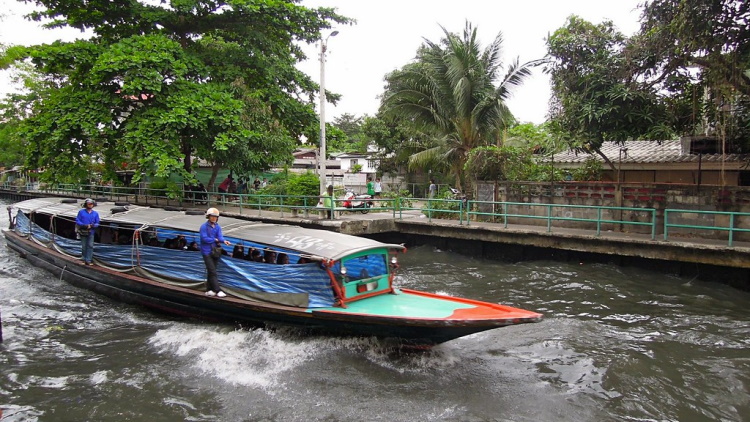
The canal boats are a completely different type of vessel to the river boats and are more suited to chugging up and down the less turbulent, but somewhat more polluted-looking Bangkok canal network system.
These boats can be quite large, pretty loud, and probably not that environmentally-friendly, but you’ll find plenty of them making their way up and down Bangkok’s many canals from early morning until early evening—although you are unlikely to see the vast majority of them.
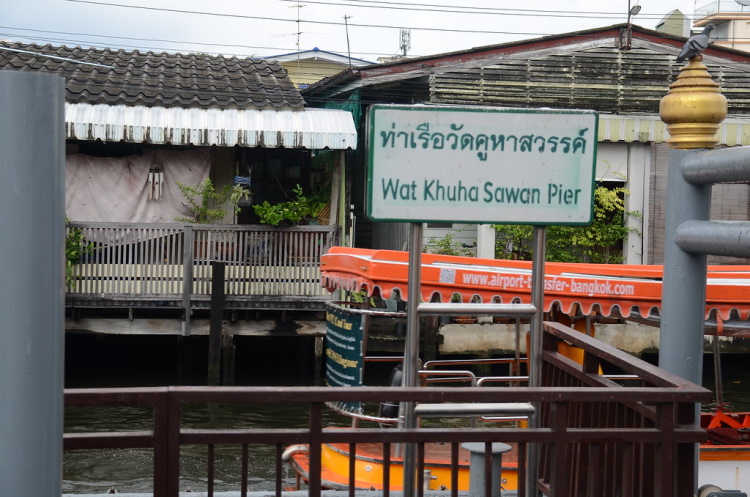
- The largest and best-known canal in Bangkok is the Saen Seab Canal, which stretches from the Old Town in the western regions of the city to Ramkamheng on the far eastern side.
- The canal taxi boats are the only vessels using this long stretch of water, and the frequency they run at varies over the course of day. Usually, it is somewhere in the region of every 5 to 20 minutes, and a trip will set you back by around 10 baht and 20 baht according to distance.
- The canal boats serve as an important transport link for many office workers heading from downtown Bangkok to the eastern suburbs, especially those who neither live close to BTS or MRT lines, nor can afford them. Seating is a bit harder to come by at rush-hour early morning peaks, but taking a trip on a Bangkok canal boat certainly offers an authentic insight into local life.
Taxis in Bangkok
We have pretty much covered the option of taking a taxi in Bangkok throughout this article. We just want to mention that we don’t want to put you off from taking a taxi despite some of the challenges certain taxi drivers might present, however, the other transport options if available will mostly be made with ease and should get you to your destination quicker.
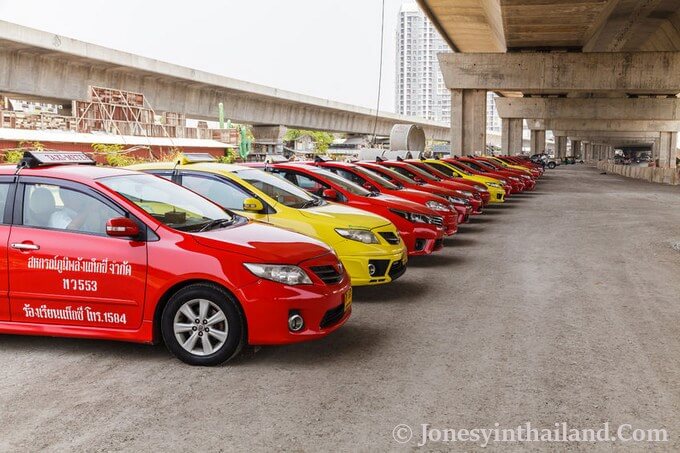
It’s not always the case that a taxi is not the best option, though. They can be the perfect and cheapest option, especially when you have a good driver, the time of day is less congested, and/or it’s a well-known destination that a driver can easily navigate to on the shortest route.
As mentioned, download one of the apps (Grab or Bolt) and take advantage of the driver knowing your destination (questionable at times), you will have the driver’s number if any problems occur, and you’ll know the cost before getting inside the taxi.
– Related: Thailand Taxi Advice and Tips and Taxis in Bangkok
Tuk Tuks in Bangkok
Tuk tuks have become something of a symbol for Thailand over the years. This means that many tourists have often rushed to jump into one in a bid to get straight to the heart of the ‘Thai experience’.
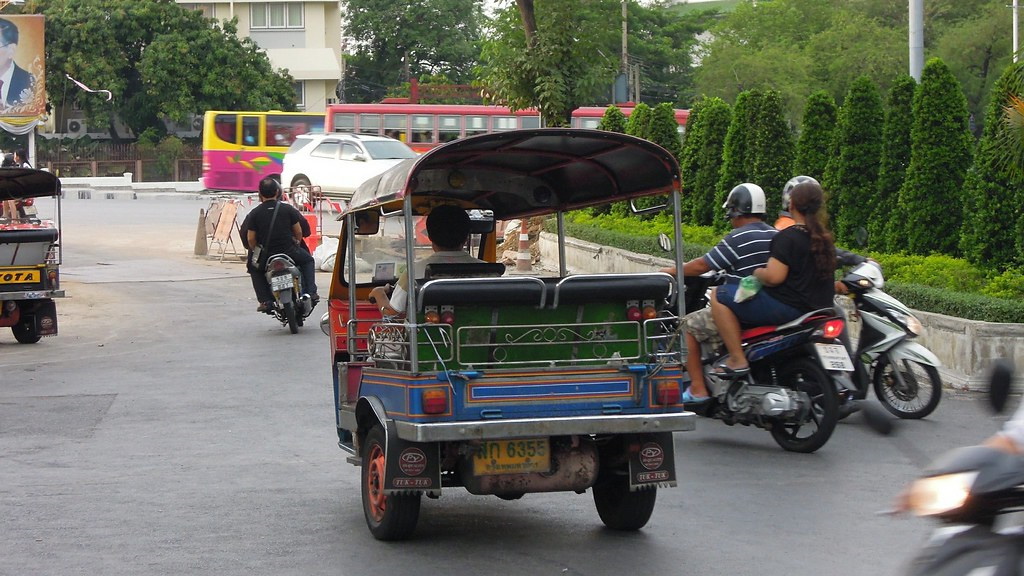
To be honest though, they may well be something of a dying breed—much of that being down to their own antics and reputation.
Certainly tuk tuks haven’t got anything like so many passengers as they might previously have had before the advent of the Metro and BTS—much less the more recent arrival of newer and more successful transportation apps like Grab.
There’s no harm in trying one at least once as a novelty, and any late-night drunken trip home would massively benefit from at least one tuk tuk in the experience.
The thing to know is there are two distinct breeds of tuk tuk driver. One is the quiet, unassuming type favored by locals with restaurants and stores, for short and easy trips to the local market. His fares are very cheap. He’s probably not interested in you either, due to language barriers and the fact that he only runs local routes. Harmless enough but not much use if you really need to get somewhere.
The other type of tuk tuk driver is the predatory, often slightly shifty-looking variety most commonly seen lurking in what he believes to be tourist areas. He is poised and ready to completely over-charge you and possibly spin a few other yarns along the way. He has made his way to the city from the countryside with the express intention of doing just that—he thinks you are the enemy and should be avoided at all costs.
Riding a tuk tuk is an interesting experience more so than it is a practical way to get home. If you are going to use one, bear in mind that fares vary according to various factors like the distance, the time of the day, the traffic, and the driver’s mood. Fare negotiating is a must and there’s a chance he won’t stick to it anyway if he thinks you are a tourist. Bear in mind that locals pay pittance for tuk tuk trips.
– Related: Tuk Tuks In Thailand – Tips and Advice
The Bottom Line
At the end of the day Bangkok has some fairly diverse options when it comes to different ways of making your way around the city. If you simply can’t stand crowds or you have small children, Grab will be your closest ally—just bear in mind the various ‘rush hour’ times of the day when gridlock looks imminent. If you are OK with crowds and you know your way round an electronic ticket machine and the odd app or two, you’ll probably be able to happily zip your way into and around the city using the metro system options. If you want something really authentic then consider canal or river boat options—all part of the fun of getting around this lively and diverse city!

Mark Philip is a writer and lifestyle enthusiast from the Midlands in the U.K. With a background in martial arts and fitness, Mark upped sticks and headed out to Bangkok to delve a bit deeper into the art of Thai Boxing way back in the 2000s, starting to write initially to fund his daily training and escape the rigours of ESL teaching. Since then Mark has authored e-books, articles, and blogs across a wide range of topics for commercial, educational, factual, health & fitness, lifestyle, wellness, and leisure-based purposes.
Related Articles
- Transport In Thailand – Transportation Guide
- Using Bangkok Taxis Guide and Types of Taxi Services Available
- Thailand Taxi Advice and Tips
- Grab Taxi Thailand Review – Using the App and Service
- Train Travel in Thailand – Guides for Tourists
- Bangkok Transport Guide – Getting Around Easily & Conveniently
- Tuk Tuks In Thailand – Tips and Advice
- Foreigners Driving in Thailand
- Bangkok Travel Guides
- Where to Stay in Bangkok?

